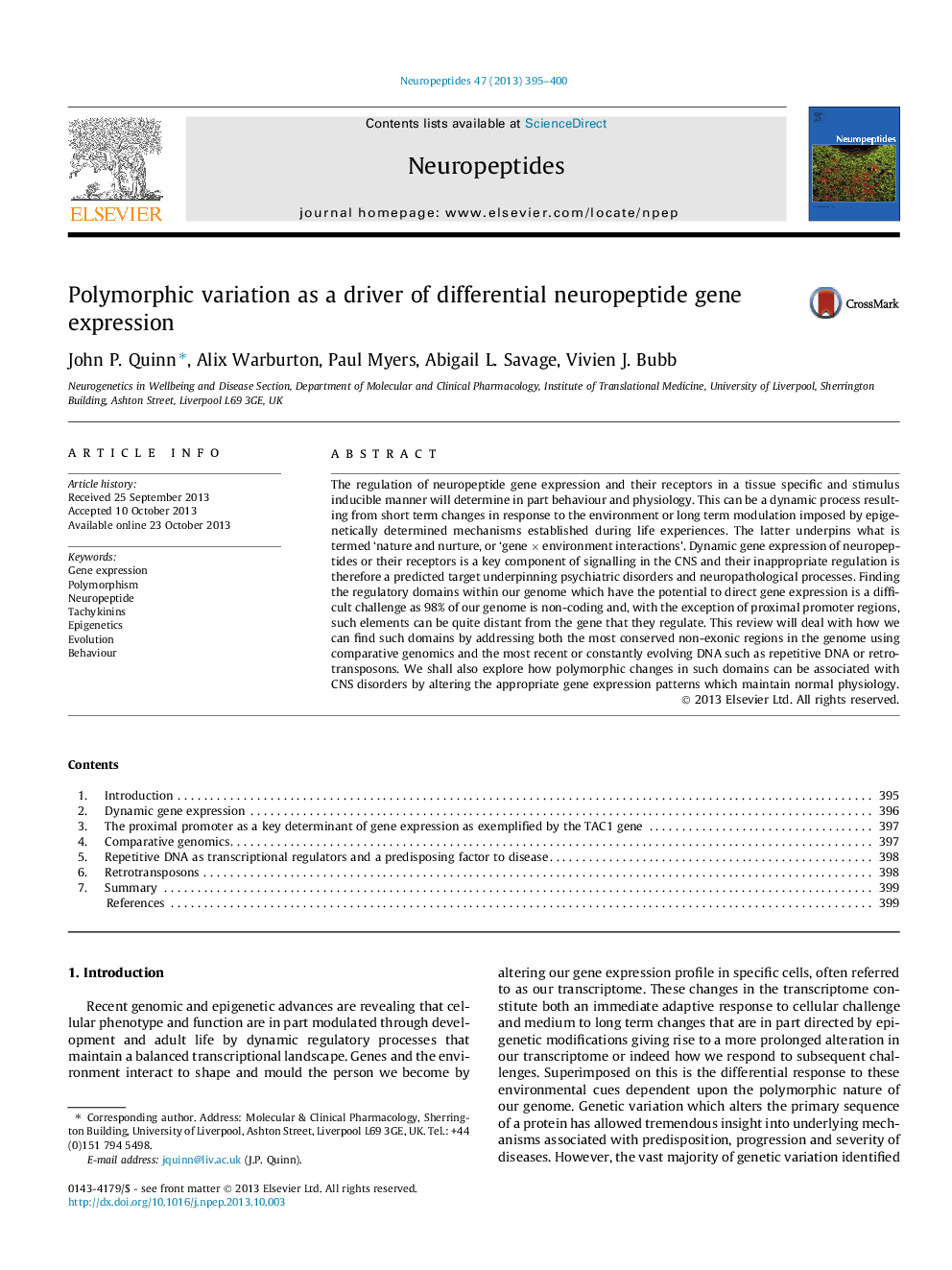| Article ID | Journal | Published Year | Pages | File Type |
|---|---|---|---|---|
| 2808179 | Neuropeptides | 2013 | 6 Pages |
The regulation of neuropeptide gene expression and their receptors in a tissue specific and stimulus inducible manner will determine in part behaviour and physiology. This can be a dynamic process resulting from short term changes in response to the environment or long term modulation imposed by epigenetically determined mechanisms established during life experiences. The latter underpins what is termed ‘nature and nurture, or ‘gene × environment interactions’. Dynamic gene expression of neuropeptides or their receptors is a key component of signalling in the CNS and their inappropriate regulation is therefore a predicted target underpinning psychiatric disorders and neuropathological processes. Finding the regulatory domains within our genome which have the potential to direct gene expression is a difficult challenge as 98% of our genome is non-coding and, with the exception of proximal promoter regions, such elements can be quite distant from the gene that they regulate. This review will deal with how we can find such domains by addressing both the most conserved non-exonic regions in the genome using comparative genomics and the most recent or constantly evolving DNA such as repetitive DNA or retrotransposons. We shall also explore how polymorphic changes in such domains can be associated with CNS disorders by altering the appropriate gene expression patterns which maintain normal physiology.
